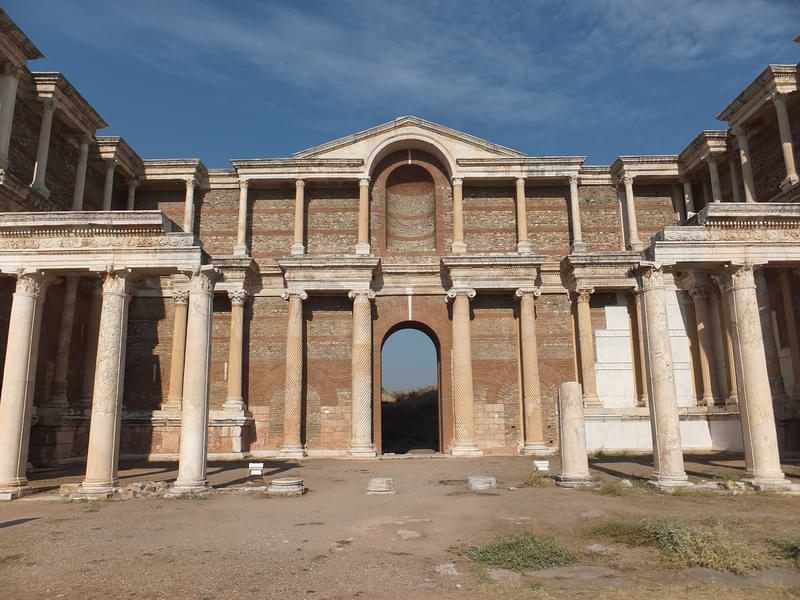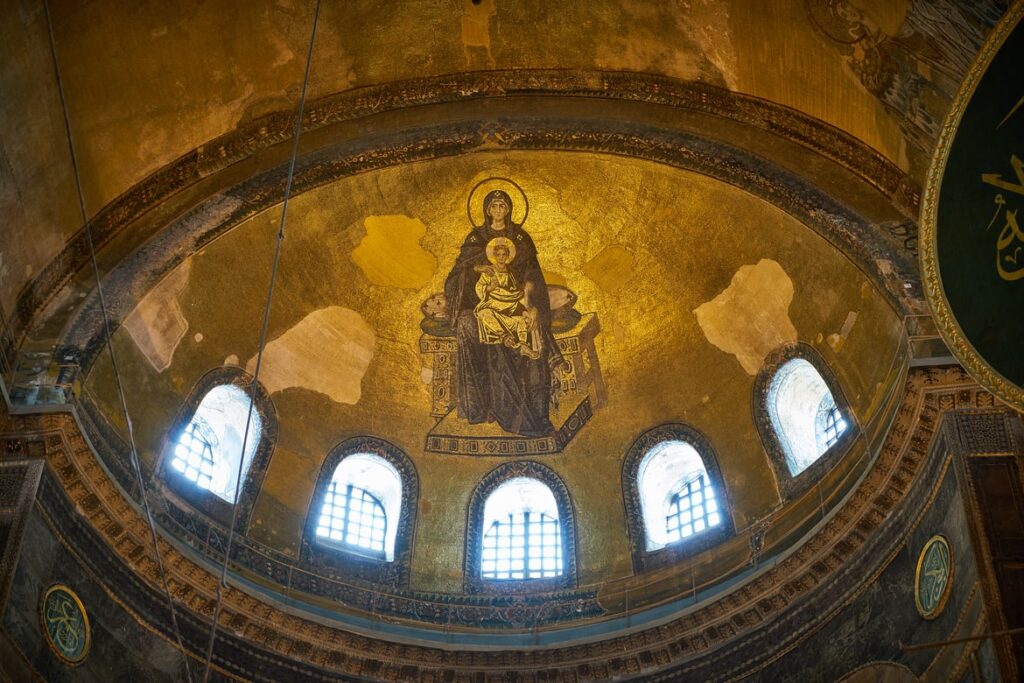Turkey, with its stunning landscapes, bustling bazaars, and ancient ruins, captivates visitors today just as it did centuries ago As I prepared for my trip to this fascinating country, I became curious about its biblical roots. What was this region called in ancient times? Did it play a role in the biblical narratives? My quest for answers took me on a journey through history, uncovering the deep biblical connections tied to the land we now know as Turkey
The Vast Realm of Ancient Anatolia
Modern-day Turkey encompasses a vast geographic realm one that was known in ancient times as Anatolia or Asia Minor. This fertile peninsula bordered by the Mediterranean, Aegean and Black Seas, has been inhabited since the Stone Age era, making it one of the longest occupied regions on earth.
Anatolia’s location at the crossroads of Europe and Asia meant it was perfectly positioned for trade and exchange. The plentiful natural resources also enabled the rise of powerful kingdoms and influential cities over the millennia. Legendary names like Troy, Lydia, Pergamon, Ephesus and Constantinople (later Istanbul) dotted the landscape.
So what did the authors of the Old Testament call this realm that played host to so many biblical events? Well, Anatolia itself was never referenced by a single name. Rather, the books of the Old Testament refer to the numerous tribal regions, kingdoms and provinces that made up the vast peninsula.
The Biblical Provinces of Ancient Anatolia
Let’s explore some of the specific Anatolian regions mentioned in Old Testament times:
-
Tubal – This central Anatolian territory was inhabited by the descendants of Tubal, the grandson of Noah (Genesis 10:2). The people of Tubal are recorded as trading with the Phoenicians and being renowned for their copper-working skills (Ezekiel 27:13).
-
Cilicia – Located on the southeastern Mediterranean coast, Cilicia was the homeland of the apostle Paul (Acts 21:39). Major Old Testament cities like Tarsus and Derbe were found here.
-
Cappadocia – The interior region of Cappadocia was known for its distinct geological formations and cave dwellings. Residents from here were present at Pentecost (Acts 2:9).
-
Bithynia – This northwest region contained major Black Sea ports. The apostle Peter addressed the Jewish diaspora here in his first epistle (1 Peter 1:1).
-
Lydia – Not to be confused with the individual Lydia of Acts 16:14, this fertile western territory featured the important city of Sardis. King Croesus of Lydia was renowned for his great wealth.
This list provides just a sampling of the diverse biblical regions in Anatolia. From thriving port cities to rural tribal settlements, they all contributed unique threads to the rich cultural tapestry.
God’s People in Anatolia
In addition to being referenced geographically, Anatolia also filled an important role in the biblical narrative by serving as a new home for the dispersed people of Israel.
Following the Assyrian and Babylonian captivities in the 8th-6th centuries BC, many Jews fled to the Anatolian regions of the Persian empire to escape persecution. Large diaspora populations became established in Cappadocia, Bithynia, Cilicia, Pamphylia and other areas. The apostle Peter addresses these “exiles” directly in his first letter written from Babylon (1 Peter 1:1).
Archaeological evidence corroborates the widespread influx of Jews into Anatolia. Synagogues from the 3rd century BC have been unearthed in Sardis and Priene. The community at Sardis even appealed to the Seleucid king for favorable treatment, as inscribed on marble slabs from the synagogue ruins.
This Jewish presence in Anatolia would facilitate the rapid spread of early Christianity in the 1st century AD via established synagogues and trade networks. The diaspora communities that first formed as refugees came to enrich both Jewish and world culture.
Christianity Blossoms in Anatolia
Following the life, death and resurrection of Jesus Christ in Judea, the gospel message spread like wildfire across the Roman world. Anatolia became a hotbed of early Christian activity, in large part due to the established Jewish communities prime for outreach. The book of Acts chronicles the extensive evangelistic travels of Paul and his co-workers throughout the region.
Major Christian communities sprouted in cities across Anatolia, including Syrian Antioch, Galatian Ancyra, Lycaonian Lystra and Bithynian Nicomedia. Paul wrote letters to the churches in Galatia, Ephesus and Colossae to correct doctrinal errors and encourage their faith. John later addressed the seven churches of Asia Minor in the opening chapters of Revelation.
As Christianity grew throughout the Roman empire, Anatolia continued to play a strategic role. The Council of Nicaea convened here in 325 AD to address the Arian controversy. Constantine chose Byzantium (Istanbul) as his eastern capital in 330 AD, further elevating Anatolia’s prominence as the seat of a Christian empire.
Even after the eastern and western branches split and the Byzantine Empire declined, Christianity maintained a lasting impact on Anatolian culture and art. Beautiful frescoes still adorn cave churches in Cappadocia while grand cathedrals stand in honor across the land.
Rediscovering the Biblical Roots
My journey through the history of Anatolia gave me a renewed appreciation for the biblical events tied to this land. Far from being just a post-biblical nation, the roots of Turkey draw nourishment from the very stories recorded in scripture. From Paul’s missionary travels to the appeals of the Jewish diaspora, Anatolia provides a rich backdrop.
As I explored impressive ancient sites like Ephesus, stood in the colorful underground churches of Cappadocia and watched the sun rise over ancient Troy, I gained a deeper connection with the world of the Bible. The lands we Journey through often shape us in intangible ways.
I’m thankful I followed my curiosity to better understand Turkey’s biblical heritage. Not only did I gain insight into the scriptural history, but I also now approach this modern nation with a sense of connection to its formative roots. The past continually echos down to the present for those willing to listen.
Turkey boasts a rich biblical heritage grounded in its ancient Anatolian geography. Named provinces like Lydia, Cilicia and Bithynia anchor the stories of the Old and New Testaments in a real place. The influx of Jewish communities and rise of early Christian centers like Antioch brought biblical figures and events alive against the Anatolian backdrop. By tracing its history from the Bible to Byzantium, we can better appreciate Turkey today as a land steeped in biblical roots. The ancient stones cry out, if only we pause to hear their message.

What was Turkey in the Bible and Biblical History
Biblical History in Turkey is more connected than most people think! The first thing coming to mind when we think about Christian historical places usually in Israel. Considered to be the Holy Land because it was where Jesus lived and died, before him it was the land of Abraham, also the promised land conquered by Joshua.
When Jerusalem was conquered by the Babylonians and the temple destroyed in 586 BC, many Jews were dispersed outside of Israel during the Jewish diaspora.
Later Asia Minor/Anatolia (now Turkey) became home to numerous Jewish communities. A Hellenistic kingdom called the Seleucids settled 2000 Jewish families in Phyrigia and Lydia in 240 BC. Paul’s family was probably settled in Tarsus.

A circular letter sent by consul Lucius recorded in 1 Maccabees 15:16-24, mentions numerous communities in Asla Minör ( How Turkey is mentioned in the Bible) with Jewish people. Although the archaeological remains of the three synagogues found in Turkey – Sardis, Prime, Andriace– all date after the 4c AD, after synagogues are known from the literary evidence.
Another book of the bible mentions Turkey with the name of Adramyttium, the book is: Acts 27:2
“We boarded a ship from Adramyttium about to sail for ports along the coast of the province of Asia, and we put out to sea. Aristarchus, a Macedonian from Thessalonica, was with us.”
Within two decades after Jesus, the gospel spread northward to Antioch, a city located in southeastern Turkey. Here the believers were first called Christians. For the rest of the first century, the land of Turkey became the center for the growing Christian movement[/vc_column_text][vc_column_text]
Most Recommended Turkey Tours
The three great apostles – Paul, Peter, John– are all linked with churches in Asia Minor ( currently Turkey). As we look at the Bible, there are a number of references to Anatolian regions and cities in the Old Testament and Apocrypha, and two-thirds of the twenty-seven books in the New Testament were either written to or from Asia Minor.
Because of this area’s strategic geographical role in the early church history, it is not an exaggeration to call Turkey ‘the Holy Land of Asian Minor’s as Frank Clark did in the title of his book on the Seven Churches. You can also check Private Biblical Seven Churches of Turkey Tour in 5 Days
A good example of how Turkey is a great place to understand well Christianity in the early stages is one of Istanbul greatest historical marks Hagia Sophia, was initially a church, and during the Ottoman Empire the Iconic Hagia Sophia Turns Into a Mosque, currently, Hagia Sophia is turned to a mosque after decades of being a museum, the decision was made last year by the president and with the support of the Muslim community.

Another important center for early Christianity in Ephesus one of the Most Important Archaeological Sites in Turkey In apostolic times, Ephesus was one of the cities of the Roman Empire where Christianity was most widespread Paul of Tarsus and John the Evangelist preached in the city.
Now that you know how Turkey was called in the bible, you will be happy to know that although Turkey is a predominant Muslim nowadays, no matter your religion you will very much welcome and will be able to check out the sightseen related in the bible.
What was Turkey called before in the Bible?
FAQ
What is the old name for Turkey?
What was the country of Turkey called in biblical times?
What land was Turkey in the Bible?
What was Turkey before it was Turkey?
Is Turkey mentioned in the Bible?
Although Turkey is not explicitly mentioned in the Bible, there are references to specific locations within the land that is now Turkey. The mention of Adramyttium in Acts 27:2 serves as an example of how biblical events were connected to specific regions in ancient Turkey. Turkey played a pivotal role in the early Christian movement.
What role did Turkey play in the spread of Christianity?
Turkey played a crucial role in the spread of Christianity. The Apostle Paul embarked on several missionary journeys throughout Turkey, preaching and establishing Christian communities. The city of Antioch, located in present-day Turkey, became known as the “Cradle of Christianity.” It was in Antioch that the disciples were first called Christians.
What is an example of Jewish settlement in ancient Turkey?
One example of Jewish settlement in ancient Turkey is the Hellenistic kingdom called the Seleucids, who settled 2000 Jewish families in Phrygia and Lydia in 240 BC. It is believed that Paul’s family was among those settled in Tarsus, a city in southern Turkey.
How did Christianity spread in Turkey after Jesus?
After Jesus, Turkey became a significant center for the growing Christian movement, with the presence of apostles like Paul, Peter, and John in various cities in Asia Minor. Within two decades after Jesus, the gospel spread northward to Antioch, a city located in southeastern Turkey.
